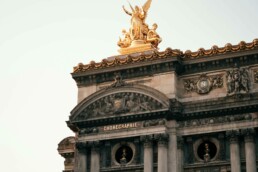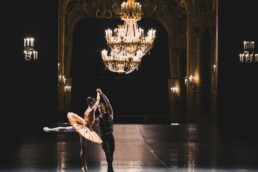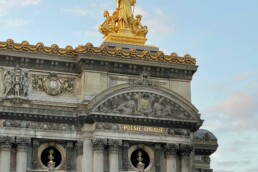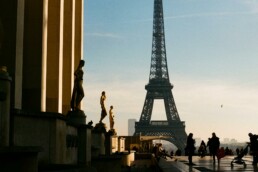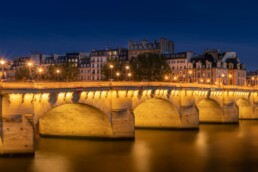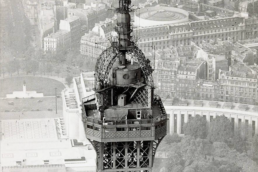In 1964, under the majestic canopy of the Opéra Garnier, Marc Chagall unfurled his palette into a vibrant and poetic fresco, transforming the ceiling of this legendary hall into a modern masterpiece. This aerial tableau, floating above the astonished spectators, is an ode to the beauty of music and dance, a dream suspended in the Parisian sky.
A Visionary Commission
The idea to transform the ceiling of the Opéra Garnier was born under the impetus of André Malraux, then Minister of Culture. Seeking to merge classical heritage with the boldness of modernity, he invited Marc Chagall, master of color and dreamlike forms, to create a work that would leave a lasting impression. Chagall, with his sensitivity and boundless imagination, enthusiastically accepted the challenge.
A Chromatic Melody
The ceiling, divided into five vibrant sections, celebrates the geniuses of classical music such as Mozart, Wagner, Berlioz, and Ravel. Each portion of the painting overflows with vibrant colors, typical of Chagall’s style, evoking a world where music and light blend into an eternal dance. The characters and scenes depicted seem to float, as if carried by an invisible melody, creating a captivating and timeless atmosphere.
Techniques and Symbols
To bring this 220-square-meter fresco to life, Chagall used oil paint on marouflaged canvas, which was then applied to the original ceiling. His bright colors and fluid forms infuse the work with movement and energy that seem to defy gravity. Angels, musicians, and dancers populate this starry sky, reminding us of the magic and fleeting nature of artistic moments.
Controversies and Acclaims
At its inauguration, Chagall’s ceiling provoked mixed reactions. Purists of classical architecture were disconcerted by this modern intrusion into such a traditional setting. However, time has worked its magic, and today, this creation is celebrated as a harmonious marriage between past and present, between tradition and innovation.
A Celestial Canvas
Today, Chagall’s ceiling at the Opéra Garnier continues to captivate and inspire visitors from around the world. This work embodies the sublime encounter between visual arts and music, a celebration of human creativity in all its splendor.
Thus, Marc Chagall’s ceiling at the Opéra Garnier is not just an architectural ornament; it is an invitation to dream, to travel through colors and shapes, in a universe where every musical note and every brushstroke come together to create an eternal symphony.
Lire également :
12 November 2024
The Angels of the Opéra Garnier: Guardians of Beauty
11 November 2024
The Booksellers of the Seine: Guardians of Dreams and Memories
5 November 2024
Through the Veils of Creation: CHANEL and the Paris Opera
5 November 2024
The History of the Trocadéro: A Parisian Memory
5 November 2024




